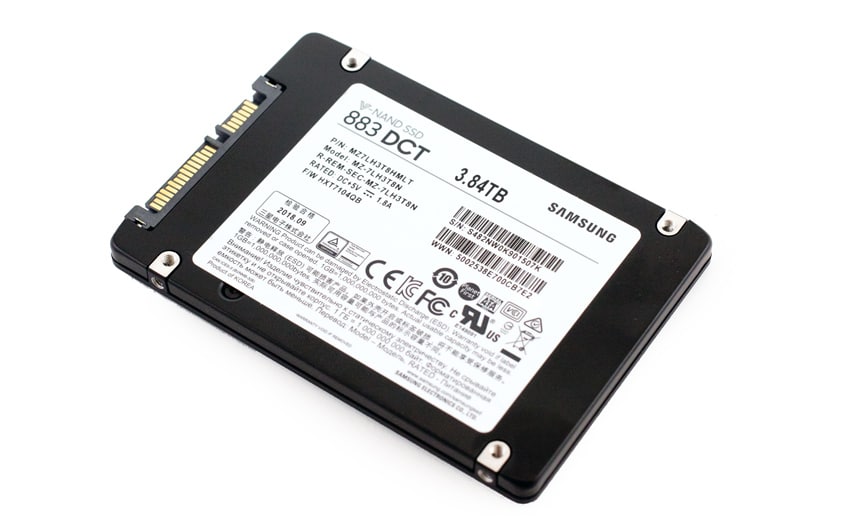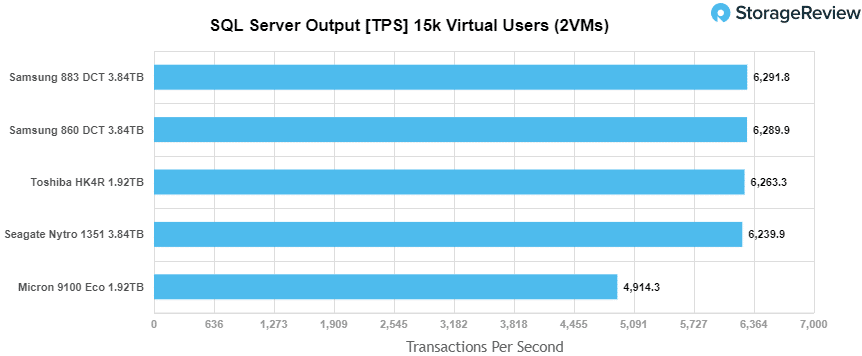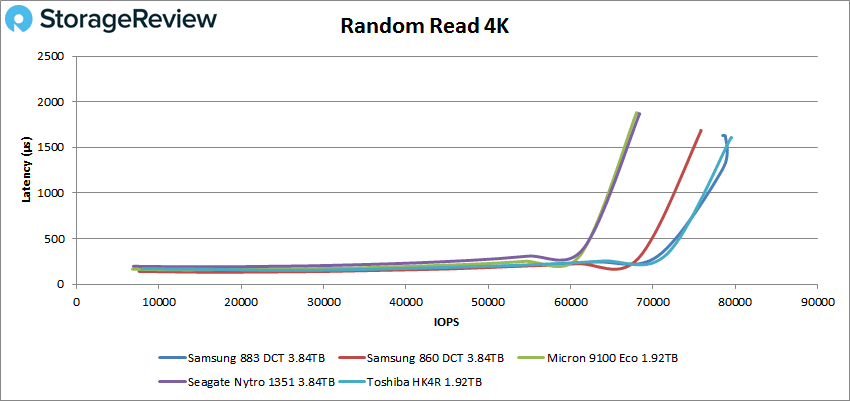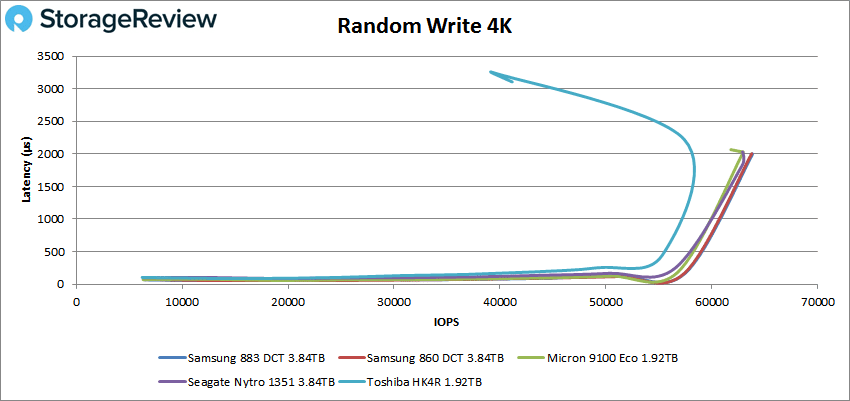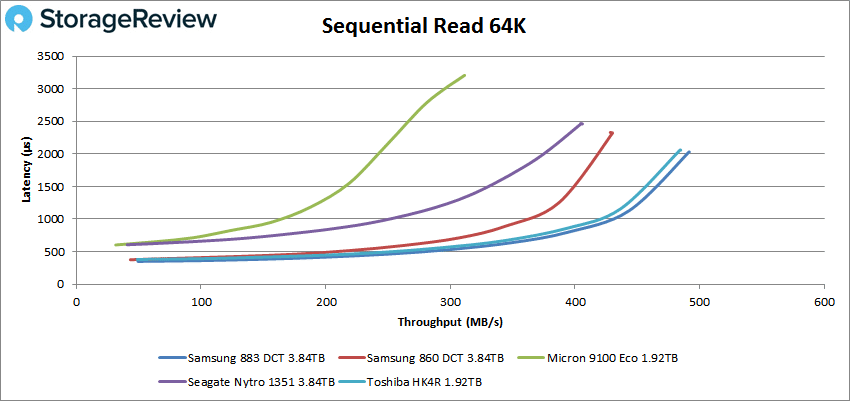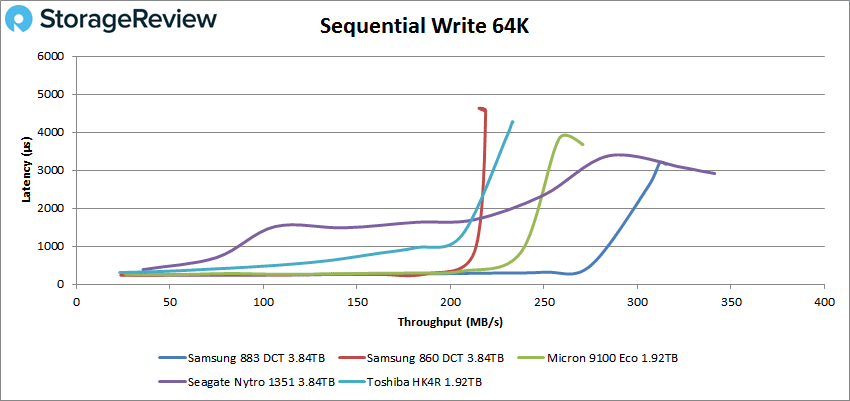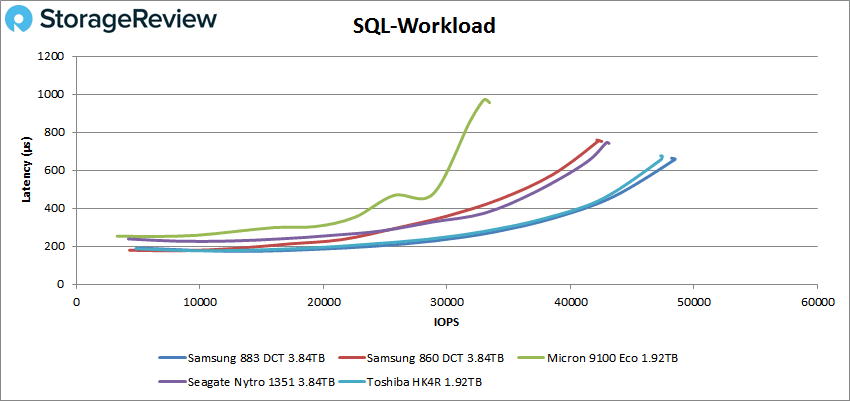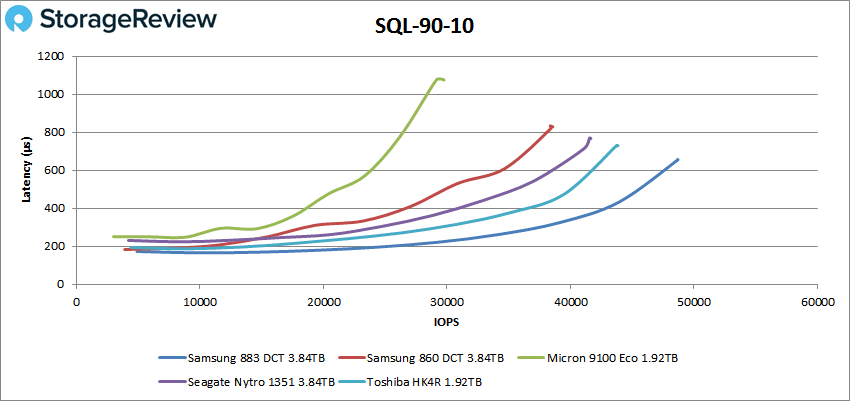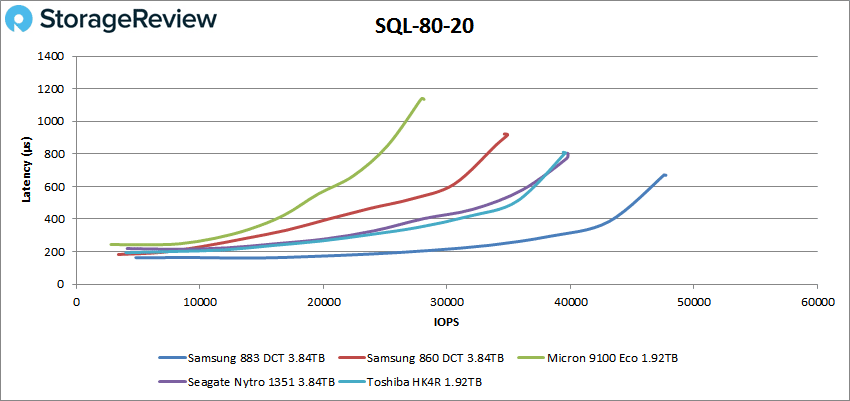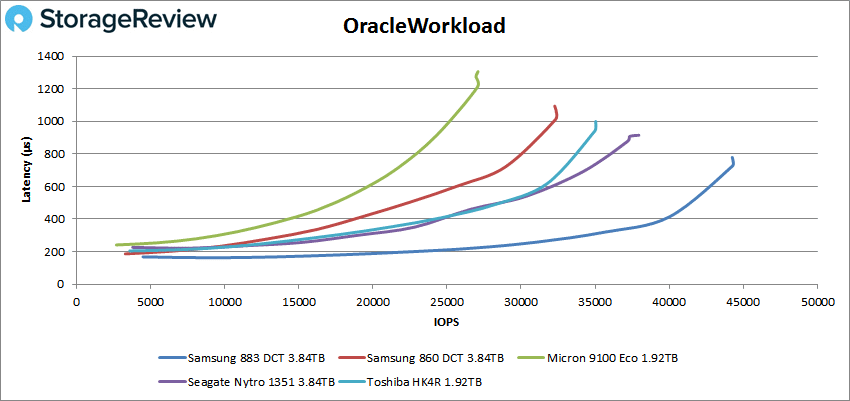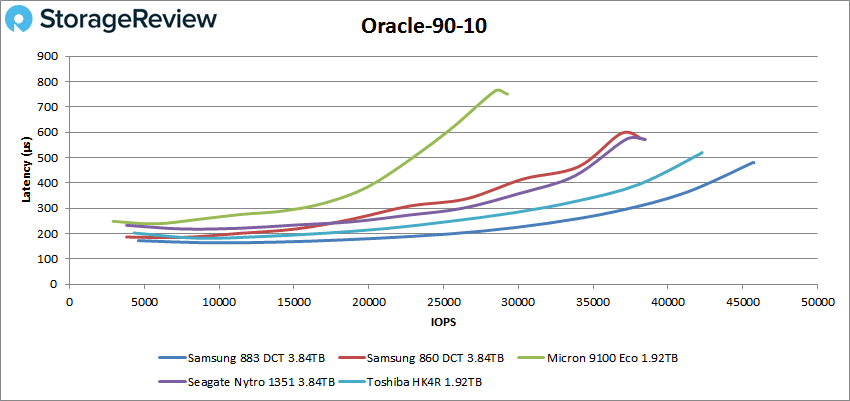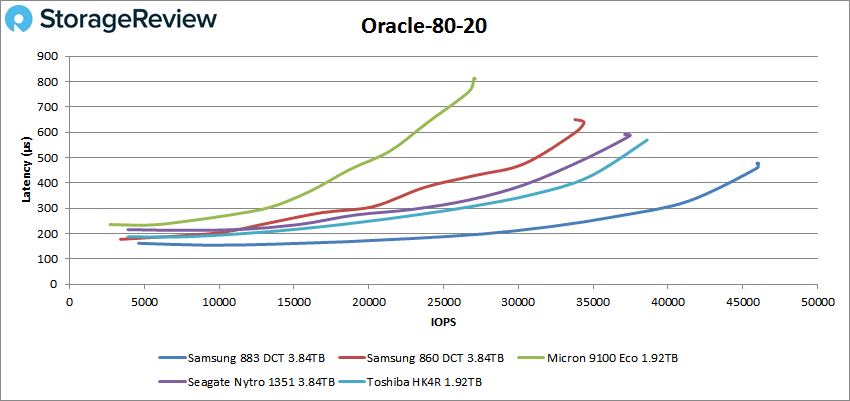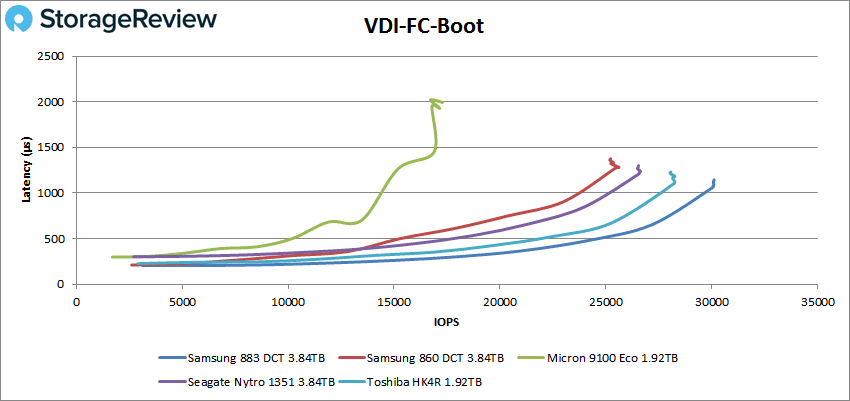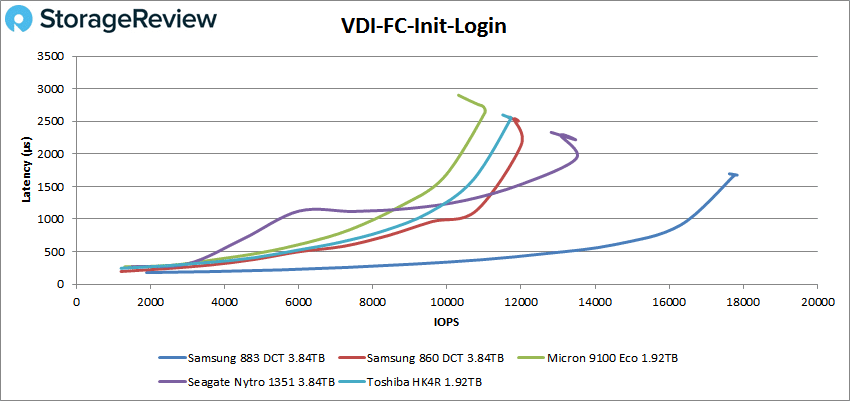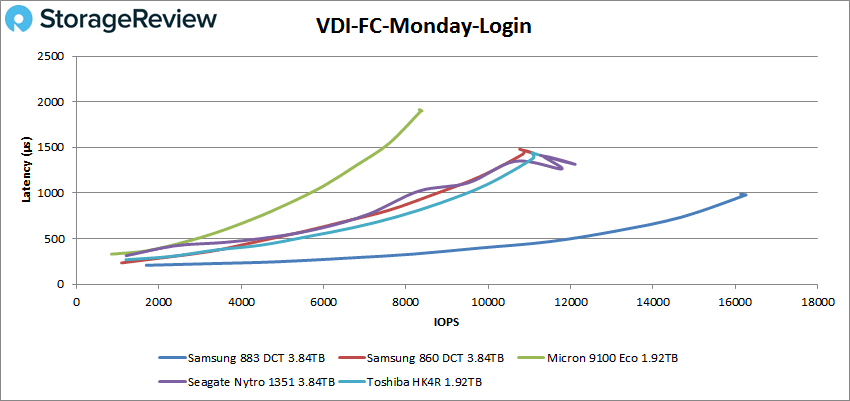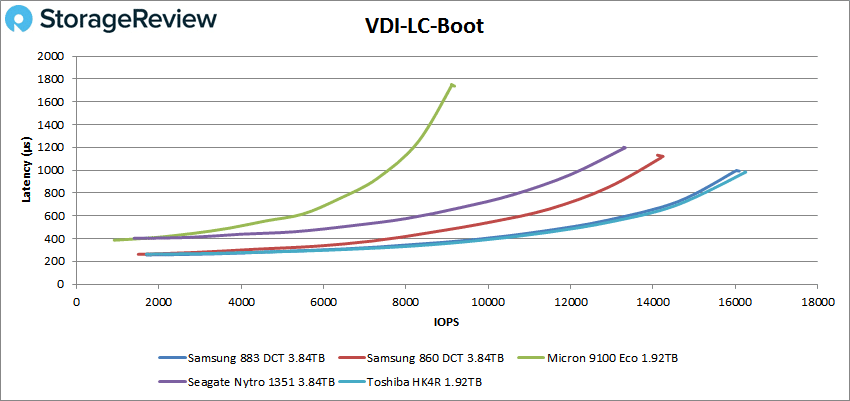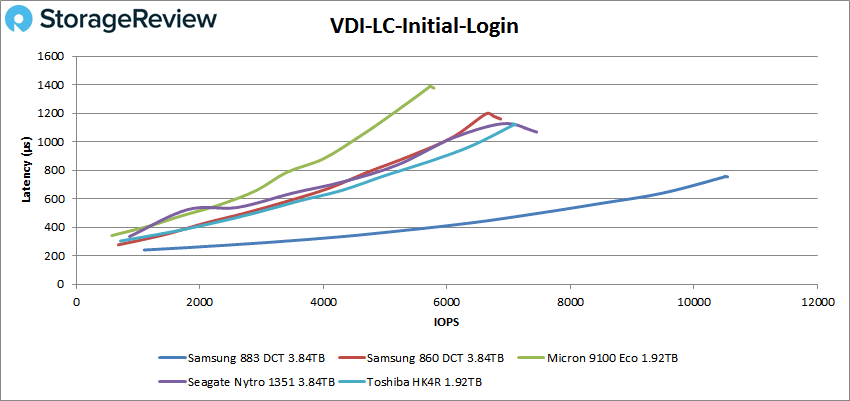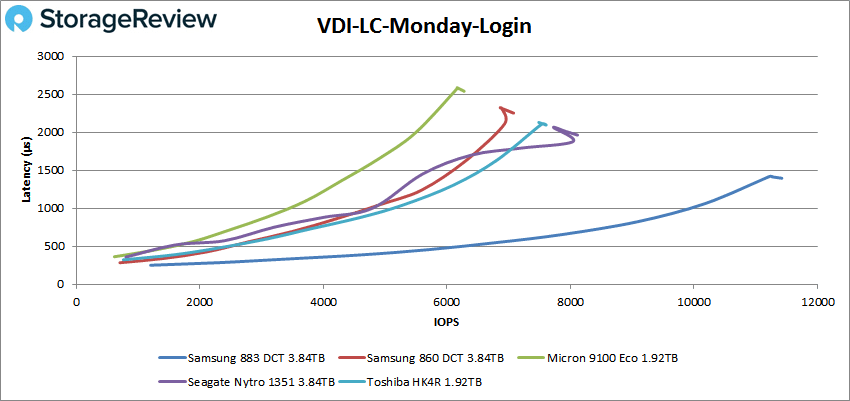
As Samsung updates its Data Center line of drives it is easy to get enamored by the fastest or largest drives that come along, namely NVMe drives. There is, however, still a large market for SATA interface drives. For this segment Samsung has released its new Samsung 883 DCT SATA SSD. The new drive is aimed at meeting the demands of server storage systems while giving the assurance of end-to-end data protection.
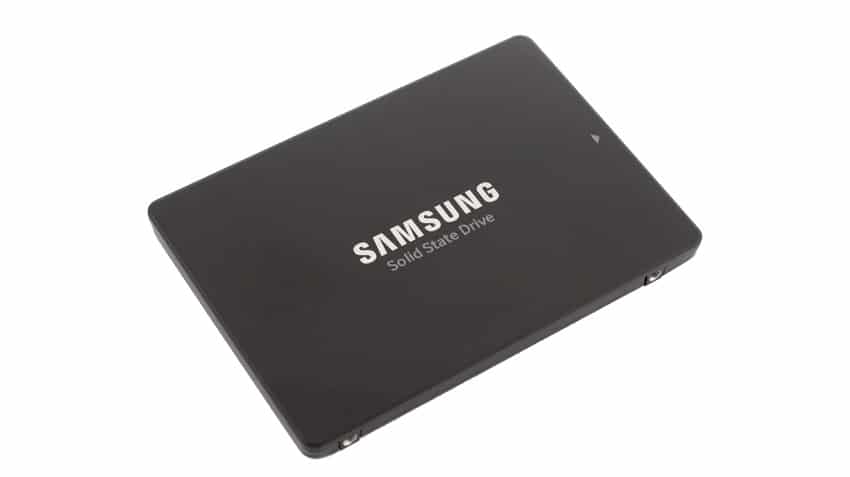
Built off of Samsung’s tried and true V-NAND, the 883 DCT comes with maximum performance of up to 560MB/s read, 520MB/s write, and throughput up to 98K IOPS read and 28K IOPS write. The drive is also optimized to hit a high level of QoS under the SATA interface. The drive comes in five capacities ranging from as low as 240GB to 3.84TB.
Data protection is of the utmost importance in the data center. With this in mind, Samsung states its 883 DCT is safeguarded with end-to-end data protection. The drive supports AES 256-bit encryption. And from an endurance perspective, has a mean time between failures of two million hours.
The Samsung 883 DCT SATA SSD comes with a 5-year limited or 0.8 DWPD warranty. For this review we will be looking at the 3.84TB capacity.
Samsung 883 DCT SATA SSD Specifications
| Form Factor | 7mm, 2.5” | ||||
| Interface | SATA 6.0Gbps | ||||
| NAND | Samsung V-NAND | ||||
| Capacity | 3.84TB | 1.92TB | 960GB | 480GB | 240GB |
| Performance | |||||
| Sequential Read (128KB) | Up to 560MB/s | Up to 560MB/s | Up to 560MB/s | Up to 560MB/s | Up to 560MB/s |
| Sequential Write (128KB) | Up to 520MB/s | Up to 520MB/s | Up to 520MB/s | Up to 520MB/s | Up to 320MB/s |
| Random Read (4KB, QD32) | Up to 98K IOPS | Up to 98K IOPS | Up to 98K IOPS | Up to 98K IOPS | Up to 98K IOPS |
| Random Write (4KB, QD32) | Up to 28K IOPS | Up to 28K IOPS | Up to 28K IOPS | Up to 24K IOPS | Up to 14K IOPS |
| QoS Read (99.99%, 4KB, QD1) | Up to 0.5ms | Up to 0.5ms | Up to 0.5ms | Up to 0.5ms | Up to 0.5ms |
| QoS Write (99.99%, 4KB, QD1) | Up to 0.3ms | Up to 0.3ms | Up to 0.3ms | Up to 0.3ms | Up to 0.3ms |
| Encryption support | AES 256-bit Encryption Engine | ||||
| Endurance | |||||
| MTBF | 2 million hours | ||||
| UBER | 1 sector per 10^17 bits read | ||||
| Warranty | 5-year limited or 0.8 DWPD whichever comes first | ||||
| Power consumption | |||||
| Active Ready Typical | Up to 3.6W | ||||
| Active Write Typical | Up to 2.3W | ||||
| Idle | Up to 1.3W | ||||
| Allowable voltage | 5.0V ± 5% | ||||
| Operating Temperature | 0-70°C | ||||
| Shock | 1500G, duration 0.5ms, Half Sine Wave | ||||
| Physical | |||||
| Dimensions (WxDxH) | Max. 100.2 x 69.85 x 6.8 (mm) | ||||
| Weight | Max. 70g | ||||
Performance
Testbed
Our Enterprise SSD reviews leverage a Dell PowerEdge R740xd for synthetic benchmarks. Synthetic tests that don't require a lot of CPU resources use the more traditional dual-processor server. In both cases, the intent is to showcase local storage in the best light possible that aligns with storage vendor maximum drive specs.
Dell PowerEdge R740xd
- 2 x Intel Gold 6130 CPU (2.1GHz x 16 Cores)
- 16 x 16GB DDR4-2666MHz ECC DRAM
- 1x PERC 730 2GB 12Gb/s RAID Card
- Add-in NVMe Adapter
- Ubuntu-16.04.3-desktop-amd64
Testing Background
The StorageReview Enterprise Test Lab provides a flexible architecture for conducting benchmarks of enterprise storage devices in an environment comparable to what administrators encounter in real deployments. The Enterprise Test Lab incorporates a variety of servers, networking, power conditioning, and other network infrastructure that allows our staff to establish real-world conditions to accurately gauge performance during our reviews.
We incorporate these details about the lab environment and protocols into reviews so that IT professionals and those responsible for storage acquisition can understand the conditions under which we have achieved the following results. None of our reviews are paid for or overseen by the manufacturer of equipment we are testing. Additional details about the StorageReview Enterprise Test Lab and an overview of its networking capabilities are available on those respective pages.
Application Workload Analysis
In order to understand the performance characteristics of enterprise storage devices, it is essential to model the infrastructure and the application workloads found in live-production environments. Our benchmarks for the Samsung 883 DCT are therefore the MySQL OLTP performance via SysBench and Microsoft SQL Server OLTP performance with a simulated TCP-C workload. For our application workloads, each drive will be running 2-4 identically configured VMs.
SQL Server Performance
Each SQL Server VM is configured with two vDisks: 100GB volume for boot and a 500GB volume for the database and log files. From a system-resource perspective, we configured each VM with 16 vCPUs, 64GB of DRAM and leveraged the LSI Logic SAS SCSI controller. While our Sysbench workloads tested previously saturated the platform in both storage I/O and capacity, the SQL test is looking for latency performance.
This test uses SQL Server 2014 running on Windows Server 2012 R2 guest VMs, and is stressed by Quest's Benchmark Factory for Databases. StorageReview’s Microsoft SQL Server OLTP testing protocol employs the current draft of the Transaction Processing Performance Council’s Benchmark C (TPC-C), an online transaction-processing benchmark that simulates the activities found in complex application environments. The TPC-C benchmark comes closer than synthetic performance benchmarks to gauging the performance strengths and bottlenecks of storage infrastructure in database environments. Each instance of our SQL Server VM for this review uses a 333GB (1,500 scale) SQL Server database and measures the transactional performance and latency under a load of 15,000 virtual users.
SQL Server Testing Configuration (per VM)
- Windows Server 2012 R2
- Storage Footprint: 600GB allocated, 500GB used
- SQL Server 2014
- Database Size: 1,500 scale
- Virtual Client Load: 15,000
- RAM Buffer: 48GB
- Test Length: 3 hours
- 2.5 hours preconditioning
- 30 minutes sample period
For our SQL Server transactional benchmark, the Samsung 883 DCT took the top spot with 6,291.8 TPS.
A better indication of SQL Server performance is latency compared to TPS. Here we see the 883 DCT have the lowest latency as well with only 25ms.
Sysbench Performance
The next application benchmark consists of a Percona MySQL OLTP database measured via SysBench. This test measures average TPS (Transactions Per Second), average latency, and average 99th percentile latency as well.
Each Sysbench VM is configured with three vDisks: one for boot (~92GB), one with the pre-built database (~447GB), and the third for the database under test (270GB). From a system-resource perspective, we configured each VM with 16 vCPUs, 60GB of DRAM and leveraged the LSI Logic SAS SCSI controller.
Sysbench Testing Configuration (per VM)
- CentOS 6.3 64-bit
- Percona XtraDB 5.5.30-rel30.1
- Database Tables: 100
- Database Size: 10,000,000
- Database Threads: 32
- RAM Buffer: 24GB
- Test Length: 3 hours
- 2 hours preconditioning 32 threads
- 1 hour 32 threads
With the Sysbench transactional benchmark, the 883 DCT once again had the top performance by a fair margin with 2,181.1 TPS.
Sysbench average latency also had the 883 DCT in the lead with 58.7ms.
For our worst-case scenario latency (99th percentile) the 883 DCT once again took the top spot with only 103.5ms latency.
VDBench Workload Analysis
When it comes to benchmarking storage devices, application testing is best, and synthetic testing comes in second place. While not a perfect representation of actual workloads, synthetic tests do help to baseline storage devices with a repeatability factor that makes it easy to do apples-to-apples comparison between competing solutions. These workloads offer a range of different testing profiles ranging from "four corners" tests, common database transfer size tests, to trace captures from different VDI environments. All of these tests leverage the common vdBench workload generator, with a scripting engine to automate and capture results over a large compute testing cluster. This allows us to repeat the same workloads across a wide range of storage devices, including flash arrays and individual storage devices. Our testing process for these benchmarks fills the entire drive surface with data, then partitions a drive section equal to 25% of the drive capacity to simulate how the drive might respond to application workloads. This is different than full entropy tests which use 100% of the drive and take them into steady state. As a result, these figures will reflect higher-sustained write speeds.
Profiles:
- 4K Random Read: 100% Read, 128 threads, 0-120% iorate
- 4K Random Write: 100% Write, 64 threads, 0-120% iorate
- 64K Sequential Read: 100% Read, 16 threads, 0-120% iorate
- 64K Sequential Write: 100% Write, 8 threads, 0-120% iorate
- Synthetic Database: SQL and Oracle
- VDI Full Clone and Linked Clone Traces
In our first VDBench Workload Analysis, Random 4K Read, the Samsung 883 DCT stayed under 1ms latency until about 72K IOPS and went on to have a peak performance of about 79K IOPS at 1.3ms latency before falling off some just behind the top performing Toshiba HK4R.
For 4K random write the 883 DCT had sub-millisecond latency performance until about 58K IOPS and tied with the 860 DCT at peak performance of 63,764 IOPS with a latency of 2ms.
Next we look at our sequential workloads. For 64K read the 883 DCT had sub-millisecond latency until about 6,900 IOPS or about 410MB/s before going on to peak in the top spot at 7,865 IOPS or 491.6MB/s with 2.03ms latency.
With 64K sequential write we saw the 883 DCT have the lowest latency the longest before going over 1ms at around 4,600 IOPS or 280MB/s before going on to peak at second place behind the Seagate Nytro with 5,043 IOPS or 315.2MB/s with a latency of 3.16ms.
Our next batch of benchmarks focus on SQL workloads. For the all the benchmarks the Samsung 883 DCT was able to deliver sub-millisecond latency performance throughout. The 883 DCT took the top spot with a peak performance of 48,472 IOPS with a latency of 657.6μs.
For SQL 90-10 the 883 DCT once again took the top spot with a peak performance of 48,703 IOPS and a latency of 655.7μs.
SQL 80-20 saw the 883 DCT take the top spot by the largest margin yet with a peak score of 47,578 IOPS and a latency of 671.1μs.
Moving onto Oracle Workloads once again we see the 883 DCT perform at sub-millisecond latencies for all tests. For the Oracle workload the 883 DCT peaked in the top spot at 42,262 IOPS and 726.2μs latency before dropping off slightly.
Oracle 90-10 had the 883 DCT in the top spot once again with a peak performance of 45,680 IOPS and a latency of 480.3μs.
The 883 DCT retained its top spot for the Oracle 80-20 test peaking at 45,989 IOPS with a latency of 476.5μs.
Next, we move on to our VDI clone test, Full and Linked. For VDI Full Clone Boot, the 883 DCT was the top performer with a latency that rode below 1ms almost until it peaked. Speaking of peak, the drive had a top score of 30,112 IOPS and a latency of 1.06ms.
For VDI FC Initial Login the 883 DCT saw another long stretch of sub-millisecond latency performance before peaking way out in the lead with 17,811 IOPS and 1.67ms for latency.
VDI FC Monday Login saw the 883 DCT as the top performer by a wide margin and the only drive to maintain sub-millisecond latency throughout with a peak score of 16,262 IOPS and a latency of 979.4μs.
For the VDI Linked Clone (LC) we start once again with the boot test. Here the 883 DCT maintained sub-millisecond latency throughout but just lost out in peak performance to the Toshiba HK4R. The 883 DCT’s peak score was 16,025 IOPS with a latency of 995μs.
In our VDI LC Initial Login, the 883 DCT took back the top spot and once again was the only drive to have sub-millisecond latency throughout. The drive peaked at 10,528 IOPS with a latency of 756.2μs.
Finally in the VDI LC Monday Login the 883 DCT was the top performer by a wide margin with a peak performance of 11,422 IOPS and a latency of 1.4ms.
Conclusion
Designed for severs and mixed workloads, the Samsung 883 DCT is a SATA interface SSD for data centers. The drive comes in multiple capacities: 240GB, 480GB, 960GB, 1.92TB, and 3.84TB. The 883 DCT leverages Samsung V-NAND with performance quoted as high as 560MB/s read and throughput as high as 98K IOPS. The drive has end-to-end data protection built in to deliver security to those that need it the most.
When looking at performance, the Samsung 883 DCT SSD impressed from beginning to end in our testing. In our Application Workload Analysis the 883 DCT was top throughout all tests. In SQL Server the drive had a TPS score of 6,291.8 and an average latency of 25ms. With Sysbench the Samsung drive hit 2,181.1 TPS, an average latency of 58.7ms, and a worst-case scenario latency of 103.5ms.
With VDBench the 883 DCT didn’t dominate throughout but it was in the top for most of the tests. Some of the highlights are 79K IOPS 4K read, 64K IOPS 4K write, 491MB/s 64K read, and 315MB/s 64K write. In SQL and Oracle the 883 DCT had sub-millisecond latency performance throughout. In SQL the 883 DCT had the top spot in all test with peak scores of 48K IOPS, 49K IOPS in SQL 90-10, and 48K IOPS in SQL 80-20. Oracle also saw the drive in the top spots with 42K IOPS, 46K IOPS Oracle 90-10, and 46K IOPS for Oracle 90-10. In our clone test the Samsung 883 DCT really shined in Initial Login and Monday Login of both our Full and Linked close tests.
The Samsung 883 DCT is an ideal drive for those that leverage SATA and need reliable storage in their servers. Not only does the drive come in several capacities including a top capacity of 3.84TB, its performance is near or at the top of our SATA enterprise SSDs.
Sign up for the StorageReview newsletter

